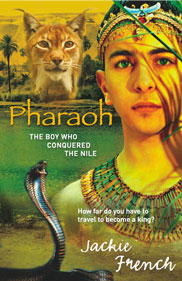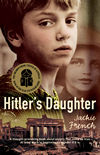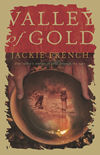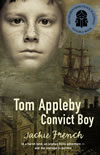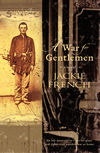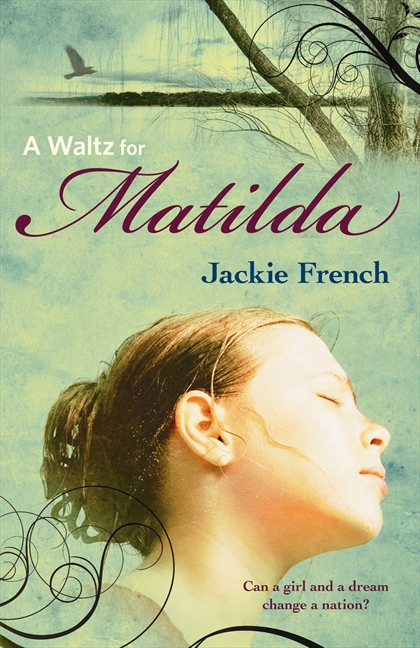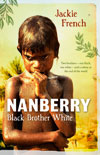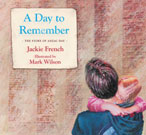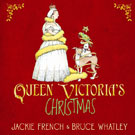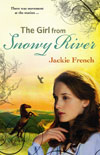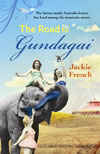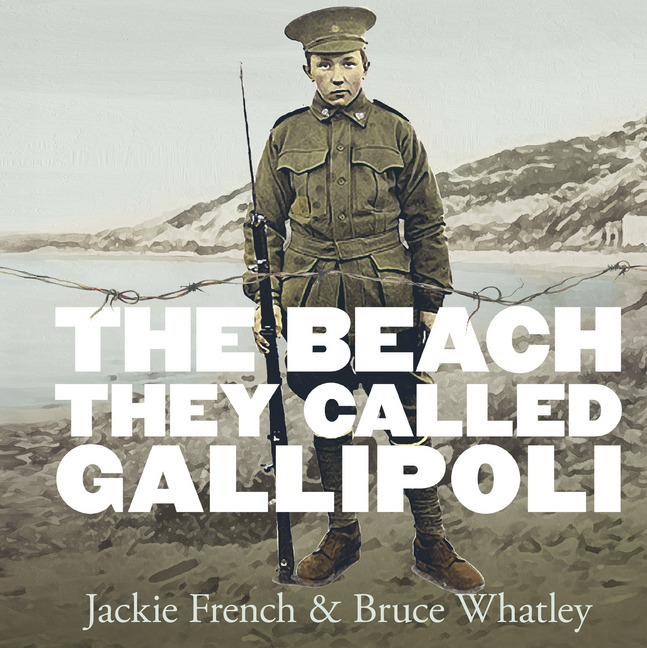|
The Goat Who Sailed the World
The Goat That Sailed the World is the true story of the very stroppy animal who sailed with James Cook on the Endeavour, on the voyage that first mapped Australia's east coast and led to the British colony there 20 years later. She gave Cook milk for the whole three years the ship had been away! This was pretty incredible for a goat - they usually don't give milk for nearly as long. Her milk was badly needed, because food on ships in those days was pretty awful.
Actually the tiny ship also carried seventy-one crew, twelve marines, eleven scientists and their servants, seventeen sheep, a small mob of cattle for meat, four ducks and five chickens for eggs, a boar, a sow and her piglets for meat too, and three cats to catch the rats that swarmed on every ship.
Ships in those days were like floating arks, small farms of animals to provide meat, milk and eggs to add to the usually stale rations. Which was why ships needed to call in to harbour often- not just for fresh water, but to find good grass that could be cut and dried for hay to feed their livestock.
The Goat was famous even before she stepped onto the Endeavour. . She had already sailed around the world with Captain Wallis, providing milk for the captain and his officers. Now she was going to face an even bigger adventure - three years finding new lands, facing wild storms and shipwrecks, and plagues that would kill a third of the crew.
But she survived it all. And by the end of the voyage she was the most famous goat in history!
The British government gave her a pension. The British Royal Society made her a member - the only animal ever to join that respected club of scientists! They gave her a silver collar too. And Captain James Cook was so fond of her that he took her home with him.
The story of the Goat is really the story of that historic voyage, too, and their adventures, mapping the transit of Venus, hunting for the Great South land, exploring the New Zealand coastline and eastern Australia, facing ship wreck, attack, and disease…
It's also the story of Isaac Manley, the boy who looked after the goat, and his rise from master's servant to midshipman, the beginning of a career that would make him an admiral, and the last surviving member of cook's crew.
Praise for The Goat Who Sailed the World:
'Irresistibly exciting and true' - Family magazine
'What a wonderful way to learn about Cook…A quick good read for adult history lovers as well.' - The Courier Mail
'This small but eventful book brings history alive…It's an irreverent and informative charmer.' - The Sunday Age
'Ideal for younger readers.' - Weekend Gold Coast Bulletin
'What a delight to read this book! Jackie French has a style that seems effortless and totally believable.' - Austral Ed Newsletter
'This is a very good story…I will definitely read the next one when it comes out.' -
Tim, aged 13, YARA website
|
Pharaoh
Based on the true story of Narmer, the young man who united ancient Egypt into one land.
Prince Narmer is fourteen and, as his father's favourite, destined to be King of Thinis, one of the towns along the River, the only world he knows.
But Narmer is betrayed by his brother, and mauled by a crocodile. Now lame and horribly scarred, he is less than perfect and no longer the Golden One. His brother Hawk will be King of Thinis. And rather than remain as Hawk's Vizier, Narmer decides to leave his home and take his chances with the mysterious Trader and the crippled Nitho, whose healing skills have saved his life.
Now Narmer must face the desert, and the People of the Sand as well as the challenges in Ur, the largest and most advanced town in the world of 5,000 years ago. Here Narmer learns of farming, irrigation, tamed donkeys and carts with wheels. Most of all, he learns what it means to be a true king and leader.
Pharaoh takes readers from an Egypt that was ancient when the pyramids were built, across the desert to the ancient land of Punt with its myrrh trees and women warriors, and the city state of Ur in what is now Iraq, but was then the biggest city in the ancient world. The book is set in a time when the world is drying up, grasslands turning to desert, and the nomad tribes (like the Biblical Abraham and his family) seeking refuge in the fertile river valleys.
|
They Came In Viking Ships
It was exciting seeing the text I worked on finally turn into a book. The cover is wonderful, and the story ...
Well, it grabbed me about five years ago. I was reading some of the Icelandic Sagas, the history poems written about eight hundred years ago. The sagas told the stories of Erik the Red, founder of the Greenland colony, and his son Leif, who sailed to 'Vinland' or present day North America.
But there too was Freydis, Leif's sister, who according to one saga also lead an expedition to Vinland. Why do we remember Leif, when Freydis is forgotten?
The more I read the more fascinated I became. Only two of the sagas mention Freydis. In one she is a total villain, who murders the rest of the expedition to get all the profits for herself, and who takes her husband's axe to kill the other women. But in the other she is a modest dutiful heroine, who saves them all when the skraelings- the native Americans- attack.
The men flee, but Freydis is nine months pregnant and can't run. So she takes up the sword of a fallen Viking, rips her bodice open, slaps the sword against her breast, and charges them, and saves them all.
Which makes sense if you think about it- bows and arrows only work at a distance. Up close an iron sword would win.
So what happened to Freydis? Why has this extraordinary women been forgotten?
Mostly, I think, she was just too strong a character for later poets and historians to cope with. By then the Roman Church had taken over from the Celtic, and they were trying hard to wipe out references to strong women, (St Brigid, for example, was a Bishop, but that but was mostly forgotten too).
'They came in Viking Ships' tells Freydis's story from the point of view of Hekja, a Scottish thrall, or slave, and her dog Snarf, as they are captured by the Vikings, taken to the Greenland colony, and then to the new colony in Vinland. The book was picked up by Harper Collins UK, US and Canada too, even before it came out here. It's an extraordinary story, though that is due mostly to Freydis Eriksdottir, not me.
|
Hitler's Daughter
(now made into a play by the wonderful people at Monkey Baa)
Four kids tell a story at a bus stop in country Australia on a rainy monday. But the story seems to have a life of it's own. It's the story of a girl in another time and another country. her name was Heide, and she was Hitler's daughter. Could- just possibly- the story be true?
How I came to write Hitler's Daughter
When I was 14, trying to do my German homework, I came across a passage I couldn't translate. My mother called a friend of hers who spoke German to help me.
It was late by then. He came over, and my mother went to bed, and we worked on the translation. But I think something in the story we were translating must have moved him (and perhaps he'd been drinking too- he hadn't known he was going to be called out to help a kid with her homework.) Because there in the silent house he began to tell me quite a different story.
He told me about a 14 year old boy, in Hitler's Germany, who joined the Nazi Party, because his parents were Nazis, his teachers were nazis. All he had ever heard or read said it was good to be a Nazi. He believed it all- the duty to rid the race of anyone who was blind, or lame, who was Jewish or Gypsy or homosexual, or anyone who believed in their religion more than Hitler, or who disagreed with his policies and had the courage to say so.
He became a guard in a concentration camp, because that is what 14 year old boys were doing in Germany at the end of the war. And when the war was over he was illegally smuggled out of Germany, with his parents, as many Nazi war criminals were.
He said to me 'When you are 14, and the world around you is insane, how do you know what is good and what is evil? How do you know?"
(And I've changed some of the circumstances here, because he was a good man, who had spent his life trying to atone for what he'd done. And he had only been 14…)
I forgot his words for many years. Then ten years ago I took my mother, my brother, my cousin and my 14 year old son to the theatre to see Cabaret for my mother's 70th birthday. The play is set in Germany, just as Hitler is coming to power. Half way through the teenage waiter sings the most beautiful song 'Tomorrow belongs to me.'
I watched as my son stared at the singer entranced. As he said to me later 'That song was about me and my friends. Tomorrow belongs to us.'
Then half way through the song it changes. The lights come up...you realise the waiter is wearing a Nazi uniform. The orchestra stands, and they too are wearing Nazi uniforms. And my son sat there in shock, because he had been identifying with a Nazi song. He said he realised how he so easily may have become a Nazi, if he had been 14 in Hitler's Germany.
How do you know what is good and evil when you are 14, and the world around you is insane?
If you are 14, and you realise evil is happening, what can you do? No one listens to 14 year olds...or do they?
If you are Hitler's Daughter, after the war, do you have to say you are sorry for what your father has done, and that you had no part of?
(And no, I don't have answers to those questions. But I think they are good ones to ask.)
|
Macbeth and Son
It's the story of two boys, a thousand years apart, who must decide if truth really matters. One is a modern kid, Luke, who has just inadvertently cheated in an exam for a prestigious school. The other is Lulach, stepson of Macbeth. But this is the historical Macbeth, the hero who was elected king of Scotland, not the villain in Shakespeare's play.
Why did Shakespeare lie? And four hundred years later, does it matter?
Macbeth and Son is about truth..and does it matter..and about the real Macbeth, and how his story was changed first of all by the English historians like Holingshead and then by Shakespeare to please King James. A bit like a playwright creating a play today where our Prime Minister single handedly fights off the invading New Zealanders…or murdering the senate to stay in power. A lie…but if it's a brilliant play, what does it matter in 400 years time?
Does truth really matter?
|
Valley of Gold
One valley’s stories of gold through the ages, from the beginning of the earth 4 billion years ago, through the valley’s creation and the history of its alluring deposits.
Interspersed with historical and geological information are stories that bring to life the valley and its occupants. First, around 35,000 BC, we meet Mirrigan, a young Aboriginal man hunting the last of the mainland thylacine to present its skin to his female friend, Dhani. From there we move through stories of European settlement, gold rushes, Chinese immigration, bushrangers, relations between Indigenous and European people, world wars, the Depression and natural disasters. When we arrive at the present day, the substance that has so shaped the valley's recent history – gold – is still an important commodity, but no longer at the expense of the valley.
|
|
All Martin has to do is walk around the boundaries and he'll own the farm and be rich. But as he walks he discovers that boundaries aren't just lines on a map. He meets Meg from last century, Wullamudulla from 40,000 years ago following the path of his born snake ancestor, Dracula - a diprotonditid from 1,000,000 years ago - a bit like a prehistoric wombat but the size of a mini bus - and they all have very difernt ideas of what owning land means.
A book about time, culture and the land . . . read more
|
Tom Appleby Convict Boy
This is the book I knew I'd write, even when I was five years old. it is about the first few years of white settlement in Australia.
Even at five I knew that many of the stories about that time we were taught at school just weren't quite true. (I kept putting my hand up aand saying 'But THAT"S not true Miss. Must have been hell to teach).
Why was I so sure? Well, my mum was an historian who read me the diaries of the people who were there..and they gave a very different picture than the one in the history books.
So here is the story of an English chimney sweep, who becomes a convict..and a pioneer.
|
A War for Gentlemen
'Charles Fitzhenry wanted to be a hero, and left his home in New South Wales to fight for freedom in the American Civil war - on the side of the south. Gentlemen like Charles fought for the ideals of their class, for honour and glory.
But it was not a war of honour. It was simply endless battles, starvation and hardship in an increasingly bitter war.
Was Charles a hero, even if the war he went to fight was not the one he found?
Based on a true story, A War for Gentlemen follows Charles Fitzhenry to battle; to his escape with Caroline, his uncle's slave, and their new life together; and the echoes of the war in the lives of their children and grandchildren. It is an unforgettable story of love and honour, unexpected happiness, and the terrible consequences of ideals - a story that still echoes in the wars Australians fight today.'
|
|
I've always been fascinated by how people survived the depression. But usually when you ask them they don'tw ant to talk about it, especially if they lived in the 'susso camps' on the food hand outs of the time, often in shacks made of old kero tins.
But Poverty Gully was different. it really did exist- it started on he border of our place, here in the valley/. There really w as a school in the wash house- though it was started before the 1930's, and there really w as a Gully jack and a Dulcie of the Dairy Farm, though the origionals weren't much like the characters in the book. But Dulcie did make soup for the sussos in her copper on the day everyone had to walk to the village to get their rations, often many kilometres. And Jully Jack did pan for gold- no one knows how much he ever found as he hid it away- and according to our neighbour Ned he never had the courage to tell Dulcie how he really felt about her.
There really was a street kid a bit like Barbara, too, though that wasn't her name. She isn't a street kid now, and wasn't either by the time I wrote the book. She had been through bad times, but mostly through her own strength of character, and partly through the kindness of others, things have worked out well for her.
Somewhere Around the Corner is about dreaming... some people fantasise about the kind of life they like, but never do more than dream. Others take their dreams and work to make them reality. Gully Jack was the first kind of dreamer. Young Jim was the second. And Barbara also learnt that no matter how bad life is today, you can dream of a better way to live...and set out to find it.
And Dulcie? She didn't have grand dreams of reforming the world, like young Jim, or of finding a fortune like Gully Jack. She dreamt of more every day things, like feeding tired hungry people, and having a happy family of her own. And she did both. Read more.
|
The Dog Who Loved a Queen
Based on the true story of the dog who was with Mary Queen of Scots when she died, The Dog Who Loved a Queen is a fascinating tale of religious bigotry, plots and passion, told from the point of view of a small Scottish terrier, more than five hundred years ago.
Folly travels from his island home to be the pet of one of history's most famous and tragic queens, Mary Queen of Scots. To the world outside her prison Mary was either murderer who killed her husband and plotted to steal the English throne, or an innocent queen kept prisoner by her jealous cousin Queen Elizabeth the First. But to her dog Folly she was simply his mistress, the centre of his world.
As Mary schemes to regain both her Scottish throne and the crown of England, Folly's world is one of chasing rats behind the tapestries and choosing tidbits from the banquet table. But as Mary's plots become more desperate, even Folly's loyalty will be tested.
More about the book
I have always been fascinated by Mary Queen of Scots and the mysteries surrounding her. The books I read when I was a teenager portrayed her either as a heartless schemer, or else as an innocent betrayed by evil men.
As I grew older I began to read the accounts of Mary's life and death from the people who were actually there, like her physician Master Bourgoine. A new picture of Mary emerged- a spirited girl, an intelligent woman and a tolerant queen in a time when small differences in religious faith in other countries led to persecution and even torture and death.
But Mary was surrounded by ambitious men, at a time when women weren't supposed to rule. And she was beautiful- so beautiful, so favoured that she never learnt to cope with hatred and treachery- until, perhaps, it was too late.
Sources
The details of Mary's life in prison come mostly from those who were there at the time, like Mary's physician, Master Bourgoine, as well as Mary's own letters, both the ones smuggled out of her prison and captured by Queen Elizabeth the First's spies, and the ones to her relatives in France ordering luxuries, pet birds and dogs, and sometimes giving details of her life with her pets as well. My major problem was that - as with so many areas of history- a lot of myths have grown up about Mary that people now take as fact.
Many web sites will tell you that Mary's dog was a Skye terrier, for example- but the breed didn't exist in Mary's day.
Others will give you the dog's name- but that was made up by a novelist, years ago, and isn't fact either. I haven't been able to find any reference in any account of the time that gives the dog a name.
Many stories about Mary make her a romantic figure who mourned Bothwell all her life. But soon after she arrived in England she tried to marry the Duke of Norfolk, and wrote him many loving letters. The stories make her an innocent prisoner, too, but her own letters make it clear she believed she was rightfully Queen of England, and that it was her duty to do anything- including plot to kill Queen Elizabeth- to gain the throne.
Many people think that in Mary's day dogs prowled around the banqueting tables, too, while the diners threw them scraps and bones. But in Mary's day it was VERY bad manners to have a dog in the room while you ate- unless, perhaps, you were a queen.
The Dog Who Loved a Queen can be read as a historical fantasy, a world of queens and plots and dogs and danger to escape into. But it can also be used to introduce readers to the historical realities of those days, from what people wore and ate to the way they thought.
The Dog Who Loved a Queen also tackles issues of intolerance and religious terrorism. But it looks at them from a perspective of 500 years away- a safer, less contentious way for young readers to think about the issues without the prejudice of modern political beliefs clouding the issues.
Does the end justify the means? How far SHOULD you go for a cause you believe in?
Were Mary's followers what we now think of as terrorists when they plotted to kill Queen Elizabeth by putting poison on her saddle?
Do causes like Mary's change as time goes by? Few people these days believe that a Queen is ordained by God and that it's blasphemy not to obey them. Will any of our modern beliefs be abandoned in a hundred or five hundred years time?
Mary's servants, as well as her dog, were loyal all her life, staying with her through the long years of her imprisonment. Would you do that for a friend? Has the idea of loyalty changed in 500 years?
Mary Queen of Scots - Murderess or rightful Queen?
One fearless Scottish terrier didn't care. Mary was simply his mistress - the true story of Mary's most loyal companion
Based on the true story of the dog who was with Mary when she died, The Dog Who Loved a Queen is a fascinating tale of religious bigotry, plots and passion. Traditional history books can't compete with the vibrancy of French's historically based fiction, calling to mind the tastes, sights and sounds of a world long left behind. Who couldn't enjoy a dog's take on the life and times of Mary Queen of Scots?!
The Goat that Sailed the World was the first in the 'Animal Stars' series, The Dog Who Loved a Queen is the second. These will be books for children on historical animals - giving kids irresistibly exciting and true stories to teach them more about history than they could ever find in a text book. (Including the history books Jackie also writes!)
|
A Rose for the Anzac Boys
The 'War to end all Wars', as seen through the eyes of three young women
It is 1915. War is being fought on a horrific scale in the trenches of France, but it might as well be a world away from sixteen–year–old New Zealander Midge Macpherson, at school in England learning to be a young lady. But the war is coming closer: Midge's brothers are in the army, and her twin, Tim, is listed as 'missing' in the devastating defeat of the Anzac forces at Gallipoli .
Desperate to do their bit – and avoid the boredom of school and the restrictions of Society – Midge and her friends Ethel and Anne start a canteen in France, caring for the endless flow of wounded soldiers returning from the front. Midge, recruited by the over–stretched ambulance service, is thrust into carnage and scenes of courage she could never have imagined. And when the war is over, all three girls – and their Anzac boys as well – discover that even going 'home' can be both strange and wonderful.
Exhaustively researched but written with the lightest of touches, this is Jackie French at her very best.
|
The Camel Who Crossed Australia
The Burke and Wills Expedition should have been one of the greatest explorations ever… white men venturing where no other white man had gone before.
Sure, you have probably heard about the Burke and Wills expedition… but have you ever heard it from the perspective of one of the camels on the journey? Or from one of the ‘Afghan cameleers’ hired from the Indian subcontinent to look after the camels?
The humans called him ‘Bell Sing’, but to the other camels he is known as ‘He Who Spits Further Than the Wind’. And spitting is something Bell Sing is not ashamed to admit he is very good at.
Transported from the mountains and deserts of the ‘Northwest Frontier’ (present-day Pakistan and Afghanistan), Bell Sing accompanies the explorers Burke and Wills as they try to cross Australia from south to north.
Bell Sing has never had a high opinion of humans – or horses. And this expedition is the worst managed caravan he’s ever been in. Cameleer Dost Mahomet and soldier John King are also beginning to wonder if their leader is incompetent or crazy.
Bell Sing can smell water over the sandhills on the horizon... and freedom too. Can the expedition succeed? And who – if anyone – will survive?
This is the gritty and true story about one of the most extraordinary and iconic events in Australia’s history.
PS And I had great fun with Bell Sing…
|
The Soldier on the Hill
It is 1942 and Joey Smith, an evacuee from Sydney, sees a Japanese soldier in the hills behind the town
But in 1942 many people have nightmares about invasion. Is the soldier real? Why does he stay on the hill above the farm?
This is a story about adventure, friendship, loss and prejudice - and above all a day to day account of life in a country town in 1942 - the fears, the rationing, the extraordinary dedication of women and children raising money for the war effort or making camouflage nets. Of Aunt Lallie who keeps organising to try to forget, the telegraph boy who must deliver the telegrams that everyone dreads, Miss Tidcombe who believes the invasion has started because someone is stealing her cats and Myrtle,the baker's daughter, who comes to believe in the soldier too. CBC Notable Book. |
Daughter of the Regiment
This is about a boy who discovers a hole in time in the chook house and sees Cissie, who lives with her parents and the soldiers 150 years ago. But then her parents die and she becomes the Daughter of the Regiment....
This is based on a true story, of an orphaned child in the 1820s.
|
Oracle
Set in ancient Mycenae, this is the story of Nikko and Thetis, acrobat brother and sister who are plucked from their village to become performers at the court of the Mycenaean King. But Thetis is both blessed and cursed - if she speaks at all, she must tell only the truth.
So what happens when she tells the King a truth about his future that he doesn't want to hear, a truth of destruction and death?
This is a story set against a colourful and sometimes harsh world, where life is short, where the King's rule is absolute, and justice is not always tempered with mercy.
It's also an inspiring story about one boy's using his ingenuity and courage to fight for freedom.
Last but not least, it's a fascinating look at one of history's earliest whistleblowers, and her extraordinary destiny as Oracle of Delphi, one of a line of soothsayers foretelling the future over a thousand years.
|
Queen Victoria’s Underpants
Queen Victoria’s Underpants should be back in the bookshops – the first printing sold out faster than anyone thought it would.
When ‘Victoria’s Underpants’ has been launched… I say ‘has been’ not ‘have been’ as we didn’t launch her underpants as such, only the book about their creation, recorded with all due hilarity by Bruce Whatley. Queen Victoria appeared in all her regal glory at the CBCA Conference in Sydney – which was one of the best conferences I had ever been to, everyone going to the same sessions, strangers meeting by bookstalls and discussing the last session, as everyone had shared the same experience.
For those who couldn’t be there, here is the Royal speech, given with my drama - and brilliant hilarity.
Queen Victoria: Lords, Ladies, gentlemen, and most worthy members of the CBCA…
For centuries we women were held hostage by our underwear.
Or should one say: one’s lack of underwear!
What protection are petticoats against a blusterous tempest, a charging tiger, a brigade of Boers?
Why were there no women in the Charge of the Light Brigade?
How can a woman charge anywhere at all when a gentleman may see a flash of ankle, a naughty knee… or even… worse?
As a gel, one longed for many things:
. to roller skate
. archery
. horse riding or even a brisk walk upon the hills.
But modesty – and my Mama – forbade it all.
And then I became the Queen.
A Queen can change the world.
It was Our decree that an invention be created, to adorn the royal person, and that by Our majestic example gels throughout the empire could do… all sorts of things.
Ladies and Gentlemen of the CBC, We present to you… the invention that liberated women:
(At which point the assembled company saw the underpants in all their royal glory)
The Underpants!
It is impossible to praise this new invention too highly.
They keep the royal person safe from wandering breezes
From peeping Toms
They even let Us ride a bicycle.
But most of all underpants mean that women can stride out across the world, sure that no one will ever see…
anything they shouldn’t.
And so to record this momentous event, We required Bruce Whately, Esquire, and Miss Jackie French, to write the history of the invention that changed the world.
They have done this right nobly.
It is a story of passion, drama, and embroidery.
It is a saga of grit and determination, linen, ruffles and some lace.
It is a tale of the vision and nineteenth century engineering that created not an iron bridge or ship, but a garment worthy of the Queen of an empire upon which the sun never sets.
Mr. Whatley’s most brilliant portraits of my person, while a little… imaginative… are indeed what Mr. da Vinci might have achieved had he been given a truly royal inspiration. Mr. Whatley’s images preserve true modesty while still showing ones’ undergarments in their true majestic glory.
Miss French has faithfully recorded the touching struggles, the desperation, inspiration and British industry of those tasked with producing garments that would actually touch the royal skin.
And if Mr. Whatley and Miss French failed to mention the moment when my darling Albert was so inspired by the underpants that he turned to me with passion blazing in his eyes and said…
… well, even in these days of underpants and liberation, some things must remain left to the imagination.
Mr. Whatley, in recognition of your stalwart endeavours and true genius We now pronounce you Admiral of Berry and Illustrator Royal.
Miss French, we pronounce you Keeper of the Royal Wombats. May their whiskers never grow less, and your and Admiral Whatley’s work be acclaimed throughout the nation.
Miss Berryman, I annoint you Mistress of the First, Second and Fifty-Sixth Draft, and Dame of the Red Correction Pen.
And to the noble worthies of the CBC, arise Dame Margaret Hamilton and Dame Gail Erskine.
The sun may have set upon my empire now, Ladies and Gentlemen, but my underpants have gone on forever.
Wherever women conquer, may the tale of the royal underpants be told!
Let the festivities commence!
|
A Waltz for Matilda
This is, perhaps, the best book I have written. It wasn’t quite the book I thought I was going to write, either. Other voices kept intruding, more whispers from the past. Finally the book was twice as long as I had expected, more saga than story.
With the help of Aboriginal elder Auntie Love, the ladies of the Women’s Temperance and Suffrage League and many others, Matilda confronts the unrelenting harshness of life on the land and the long-standing hostility of local squatter, Mr. Drinkwater. She also discovers that enduring friendship can be the strongest kind of love.
Set against a backdrop of bushfire, flood, war and jubilation, this is the story of one girl’s journey towards independence. It is also the story of others who had no vote and very little but their dreams. Drawing on the well-known poem by A.B. Paterson and from events rooted in actual history, this saga tells the story of how Australia became a nation. It is also a love story – about a girl, and about the land.
Praise for A Waltz for Matilda
'Jackie French has a passion for history, and an enviable ability to weave the fascinating minutiae of everyday life into a good story. ' Magpies Magazine
|
Nanberry: Black Brother White
The Writing and Research for Nanberry- Black Brother White; or
How The Possum Who Kissed a Convict vanished, and left Nanberry: Black Brother White instead.
Every time I look at Nanberry: Black Brother White I think ’How on earth did this happen?’
Once there were two brothers, one black, one white, in a colony at the end of the world. The two brothers witness the struggles of the colonists to keep their precarious
grip on a hostile wilderness, the black brother haunted by the memories of the Cadigal warriors who will one day claim him as one of their own.
But that wasn’t the book I intended to write.
I wanted to write a short, mostly funny book, about Australia’s first doctor, so lonely that he tried to tame a possum. It was to be called The Possum Who Kissed a Convict.
I thought I knew the story, from Surgeon White’s diaries and letters of the time. The Aboriginal boy Surgeon White adopted when he was orphaned in the smallpox epidemic would be part of the background. ‘Native’ children back then were adopted as servants, and I’d found fewer than a dozen references to the boy. There was a convict housekeeper, too, who bore Surgeon White a child just before he left for England, maybe worth a page or three.
So much of what we think we know about those first years of the early colony is either myth or cliché. But my mother had read me Tench’s diaries from that time as bedtime stories. I thought I knew every primary source that could be used. Yet as I began to write ‘The Possum Who Kissed a Convict’ more information almost landed on my lap.
The transcripts of the Old Bailey trials came on line. Suddenly I discovered that Surgeon White had true companionship in Rachel Turner, possibly the first woman who was defended in an English court of law, almost certainly innocent. She would become the wealthiest, most loved woman in the colony. Nor did Surgeon White forget her when he sailed away. He supported her, wrote to her, insisted that his convict born son come to him in England, to be educated as a gentleman. Draft two of the book changed completely. Now Rachel had an equal role with Surgeon White.
Andrew, their son, the illegitimate convict brat, became an officer. He fought at Waterloo, as a sapper. His life was to be a footnote in the book, which would end when Surgeon White was recalled to England, attempting to take his possum with him.
I contacted the Australian sappers simply to see what role the sappers played at Waterloo. Instead I found Steve Sheehan, who had been researching Andrew Douglass Keble White for over 20 years. Surgeon White’s son is celebrated not just as a Waterloo hero, but also as Australia’s first returned serviceman. There is a dinner in his honour every year.
By now The Possum Who Kissed a Convict was draft three. It was twice as long as draft one, with Andrew as one of the main characters, the book extended to take in his life, too. The book was almost ready for the printer.
Then at a history conference morning tea I mentioned I was writing a book about Surgeon White, who had adopted a boy called ‘Nanberry’. The woman behind me turned and said ‘Nanberry is my ancestor.’ A few weeks later the letters of sailor Dawes were published- and there was a reference to Nanberry, giving him one of his other names as well. Suddenly, with the extra name, far more information was within reach. I stayed at my computer till 2 am, emailed friends who could help research.
I had it wrong, every bit of it. Nanberry was no servant. Surgeon White adopted him as his son, giving him the name he’d eventually give his own son when Nanberry insisted on keeping his own name. At eight years old this boy, with a genius for languages, became the colony’s translator.
Eventually Nanberry would become a Cadigal warrior and a sailor, balancing both cultures to achieve, I think, a life of great fulfilment. We hear so much of the tragedy of lives like Bennelong, but little of those like Nanberry, who found a respected life in both white and black society.
I rewrote the book again. And again. And again.
It was fascinating material, about extraordinary people: battles, lives sacrificed to codes of duty, and survival against crippling odds of starvation, disease and isolation. It was a story of one man’s abiding love for his children and a woman he could never marry, and of two brothers, separated by race and all the prejudices of the time, who loved each other too. It is a story about how both of them triumphed over the circumstances of their birth.
Parts are almost unbelievable — and yet they happened. Above all, this book is as close to the primary sources as I could make it. Even much of the dialogue is words quoted from more than 200 years ago.
By the time I had completed draft fourteen, the book was Nanberry: Black Brother White, with the two brothers, not their father, at the centre. (The possum, however, stayed. It is difficult to get rid of possums, whether in your roof or writing.)
Could bringing together so much research make a compelling book? As with Flood, my other shortlisted book, I waited, scared, for the first readers’ reactions. Usually you know if a book works. (If you want to read the book you are writing instead of the book you pick up at bedtime, you can be pretty sure you’re on the right track). I wondered if I had managed to make Flood accurate. With Nanberry: Black Brother White, I didn’t know if so much data could be condensed into a story. You can change fiction to make it more exciting. You can’t change the past.
Now, each time I read a review, open a letter or email about the book, I feel like crying. Nanberry: Black Brother White, is so much their story- Nanberry’s, Andrew's, Rachel’s and Surgeon White’s. I desperately didn’t want to let them down.
But it was also a joy and privilege to write this book, all fourteen versions of it, to track down their stories, from old letters and court transcripts to White’s own words, a compelling a window into that strange world of two hundred years ago.
Sometimes it’s almost as though there is a whisper through time: ‘Remember me.’ Most of all, I hope I have done those whispers justice.
|
Pennies for Hitler
It's 1939, and for Georg, son of an English academic living in Germany, life is full of cream cakes and loving parents. It is also a time when his teacher measures the pupils' heads to see which of them have the most 'Aryan'- shaped heads. But when a university graduation ceremony turns into a pro-Nazi demonstration, Georg is smuggled out of Germany to war-torn London and then across enemy seas to Australia where he must forget his past and who he is in order to survive.
Hatred is contagious, but Georg finds that kindness can be, too.
The companion piece to HITLER'S DAUGHTER, PENNIES FOR HITLER examines the life of a child during World War 2, from a different perspective.
Author’s note
Sometimes many stories come together and become a book. More than ten years ago a story told in my childhood from a man- a kind man- who had once been a guard in a concentration camp, became the book Hitler’s Daughter.
But there were more stories of that time – the whispered memory of friend’s father, who had watched his fellow students thrown out a high window at a graduation day by a band of Nazis; the oral history of a Jewish boy who was told he had the ’most Aryan head’ in the whole class; a neighbour who had escaped Nazi persecution in Germany as a small child, but then become a German enemy in England, finally- unexpectedly- discovering love and happiness in Australia.
They are all in Pennies for Hitler, though all changed too. But mostly, Pennies from Hitler came from a letter by a 14 year old boy.
He was in a class for the intellectually handicapped. Hitler’s Daughter as the first book he and his friends had ever read, maybe because they’d seen Monkey Baa’s Hitler’s Daughter: the play, and so found the book easy to follow.
His letter said:
Dear Jackie French
What I have learned from your book is to be very wary of anyone who tries to make you angry. Yours, James.
I had never realised that message was in Hitler’s Daughter, but perhaps it’s the most important one there is.
So this book is for James. It is about a boy who isn’t there, who can’t be anywhere, because wherever he goes he is the enemy. It is about how hatred is contagious, but it is also about how kindness and love and compassion are contagious too. In a world where there are still destroyers, like the Nazis, there are also loving people like the Peaslake family of Pennies for Hitler , and indomitable friends like Mud.
You never know quite what you create when you let stories loose. Pennies for Hitler is an adventure, and a love story is a strange way too. But I suspect that readers will find more in it than I knew I’d written, just as with Hitler’s Daughter.
|
A Day to Remember
The Day We Remember
The barges, lifeboats and rowing boats set out from the big ships before dawn on April 25, almost a hundred years ago. As the sky grew grey, the first men of the Australian and New Zealand Army Corps landed on a narrow strip of Turkish beach.
Over the next six months a legend grew of heroes who advanced no matter what the odds; of mates who shared their last crust with a friend; of ‘diggers’ who refused to salute an officer, who died with a last joke and a grin.
The stories left out a lot that didn’t fit the image. But it was also true.
The first Anzac day in 1916 was created to urge more men to feed the war. A Day to Remember is the history of that one day of the year, and how it has changed over almost 100 years. It’s the story of Australia, too.
My father in law landed at Anzac Cove, too. He never spoke of it.* Every year he marched, increasingly bitter, with friends unemployed because of the depression, or with lungs or eyes rotted from mustard gas. The marches were mostly men only affairs back then, as were the dawn services, in case crying women disturbed the silence.
My childhood saw the battered and weary of World War two, men scarred in body and mind from Japanese prison camps or the Burma railway, the mothers of my friends and my violin teacher, who had survived concentration camps.
Boys of my own generation marched away as conscripts to Vietnam, while I walked in anti war demonstrations. As a historian I came up against determinedly uncooperative bureaucracy as I tried to check a list of places where Australian troops have been sent since the 1970’s#. While newspapers talk of Timor, Iraq and Afghanistan, few Australians know our defense forces serve as peacekeepers places like Tonga, Cambodia, Somalia and Rwanda and Haiti. Peace is not easily won, or kept. But many do the best they can.
I’ve seen Anzac Day change from the grim faced marchers of my childhood, to the years when it seemed as if Anzac day might vanish except for a dedicated few, or when the Anzac day marchers faced anti conscription demonstrations, and women with placards who demanded the right to march too. In the past two decades our reawakening sense of history has recreated Anzac day yet again. Each year the marches are larger, the commemorations broader. Anzac Day itself has been a catalyst for many people to discover Australian’s history, too.
Last Anzac day I stood with friends in Braidwood’s main street. Children marched with their grandparents’ medals. A poodle sat next to us, a sprig of rosemary in its collar. A kid called out ‘Daddy’ as her father passed. Most of us, I think, wept a little as the Last Post played.
And we remembered.
For some it was a celebration of military tradition. Others in the crowd were pacifists, or felt that Australians shouldn’t be in Afghanistan. It didn’t matter. There are many different memories that make up Anzac day now. We remembered fathers, husbands, aunts, sons, daughters and grandfathers; those who our country sent to war and then forgot, when they returned home damaged; the starving and tortured who struggle towards refugee camps; all who suffer in war, or give their lives to try to make things better.
I wrote A Day to Remember because by honouring the suffering and sacrifice of others we find the gift of empathy ourselves. On this one day of the year, it is good to stand together, and remember not just the past, but why we need to remember, too.
*For those trying to calculate my husband’s age: Jack Sullivan survived Gallipoli and World War 1, though probably never quite recovered. He married and had children late in life.
# The six months of attempts to get two short paragraphs of already public information approved as accurate by the Department of Defence for a history series for kids would take at least three pages to describe.
|
Queen Victoria’s Christmas
Something strange is happening at the palace and the dogs can’t work it out.
The cooks are busy ... are royal visitors arriving?
Mysterious parcels are arriving.
And most curious of all ... what is that tree doing in Prince Albert’s study?
From the creators of the delightful Queen Victoria’s Underpants comes the story of the first ‘traditional’ Christmas, complete with a Christmas tree and presents for the family, as seen from the point of view of Queen Victoria’s beloved four-legged friends.
Like Queen Victoria’s Underpants, this book is based on real events. Even the war between the palace dogs and the parrot is based on the many letters and diaries of Queen Victoria.
|
The Girl From Snowy River
The year is 1919. Thirty years have passed since the man from Snowy River made his famous ride. But World War I still casts its shadow across a valley in the heart of Australia, particularly for orphaned sixteen-year-old Flinty McAlpine, who lost a brother when the Snowy River men marched away to war.
Why has the man Flinty loves returned from the war so changed and distant? Why has her brother Andy 'gone with cattle', leaving Flinty in charge of their younger brother and sister and with the threat of eviction from the farm she loves so dearly?
A brumby muster held under the watchful eye of the legendary Clancy of the Overflow offers hope. Now Flinty must ride to save her farm, her family and the valley she loves. Set among the landscapes of the great poems of Australia, this book is a love song to the Snowy Mountains and a tribute to Australia's poets who immortalised so much of our land.
The Girl from Snowy River combines passion, heartbreak, history and an enduring love and rich understanding of our land. It continues the grand saga that began with A Waltz for Matilda.
Praise for The Girl from Snowy River:
' ... when I was 11 or 12, I would have read and reread it until it fell to bits. It has everything: horses, poems, ghosts, heroism, war, the bush and a love story.' -Saturday Age
'This is a genuine gem that is impossible to put down and must be swallowed whole in one sitting.' -Newcastle Herald |
The Road to Gundagai
Blue Laurence has escaped the prison of her aunt's mansion to join The Magnifico Family Circus, a travelling troupe that brings glamour and laughter to country towns gripped by the Depression. Blue hides her crippled legs and scars behind the sparkle of a mermaid's costume; but she's not the only member of the circus hiding a dark secret. The unquenchable Madame Zlosky creates as well as foresees futures. The bearded lady is a young man with laughing eyes. A headless skeleton dangles in the House of Horrors. And somewhere a murderer is waiting ... to strike again.
This third book in the Waltz for Matilda saga is set in 1932, at the height of the Depression. Miss Matilda is still running Drinkwater Station, but has put aside her own tragedy to help those suffering in tough economic times and Joey, from The Girl from Snowy River, uses his new medical skills to solve a mystery.
|
To Love a Sunburnt Country
Heartfelt, powerful and unforgettable. This extraordinary novel is set during WW2 and comes from one of Australia's best-loved storytellers. The year is 1942 and the world is at war. Nancy Clancy is 16 and left school to spend a year droving, just like her grandfather Clancy of the Overflow was famed for. Now Nancy's family has sent her to Malaya to bring home her sister-in-law Moira and baby Gavin.
Moira is British and married to Nancy's brother Ben, who is now a soldier. Malaya is under threat from the Japanese, but despite the warnings Moira has resisted leaving as she wants to stay near her husband. When Malaya is invaded, Nancy, Moira and Gavin are fortunate to get out before Singapore falls. When their ship is bombed they end up stranded on an island where they, and some other colonial women, are captured. There begins the nightmare and horror of internment in a Japanese camp. Back home at Gibber's Creek families are doing their bit for the war. They worry constantly about their men who are fighting - and now those who are missing after Singapore falls.
This is powerful, compelling and confronting and a book that pulls no punches. |
The Beach They Called Gallipoli
Many books have been written about the battles of Gallipoli; the men who went to war and what they faced, the letters, and the tears of those left behind. But this is a book about Gallipoli, the place, and what happened on Gallipoli Beach from April - December 1915. With beautiful and painterly illustrations by Bruce Whatley this is a book that explores the beach where the battles took place.
In focusing on the actual place of war, the book will also examine many other aspects of WW1, from the soldiers and the conditions they fought in, to the civilians at home. This is more than a book about ANZACS; this is a book about and for all of the nationalities who fought at that cove, not matter what side they were on.
Ages: 7-12
|



